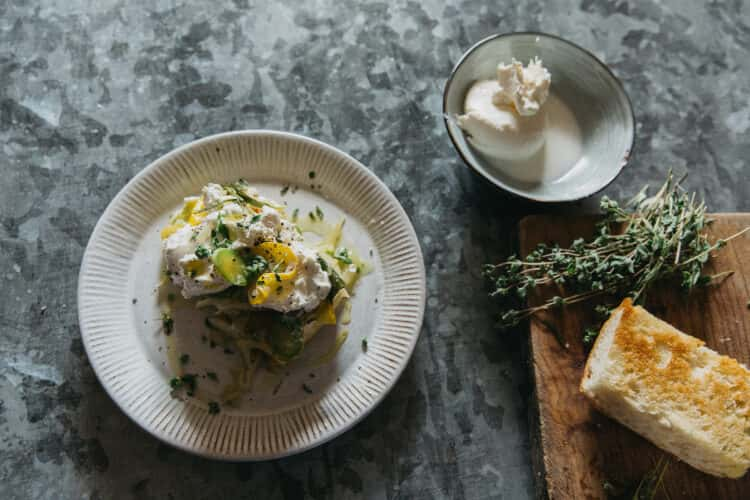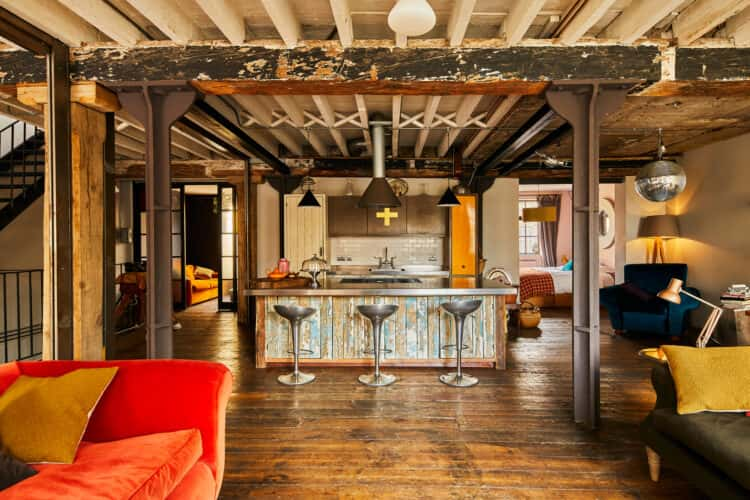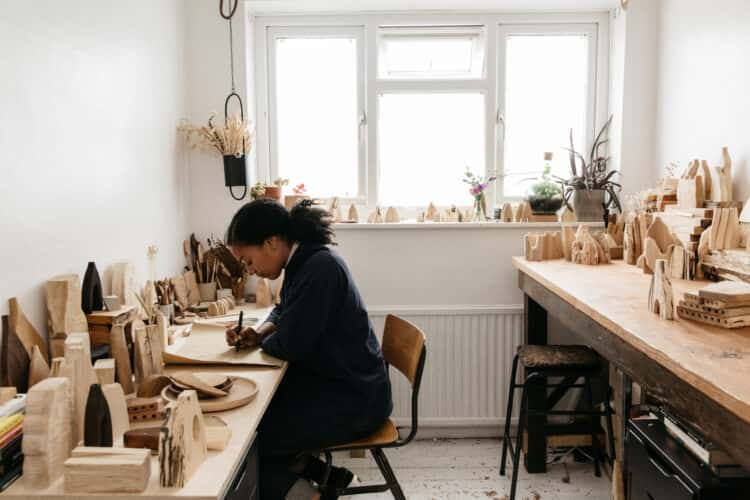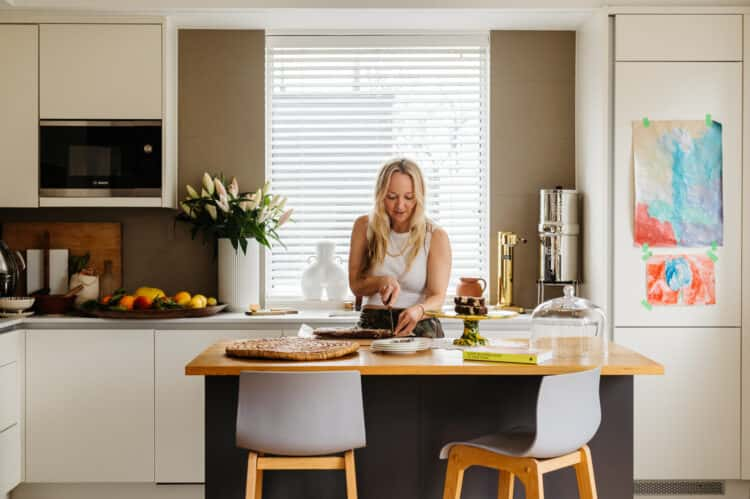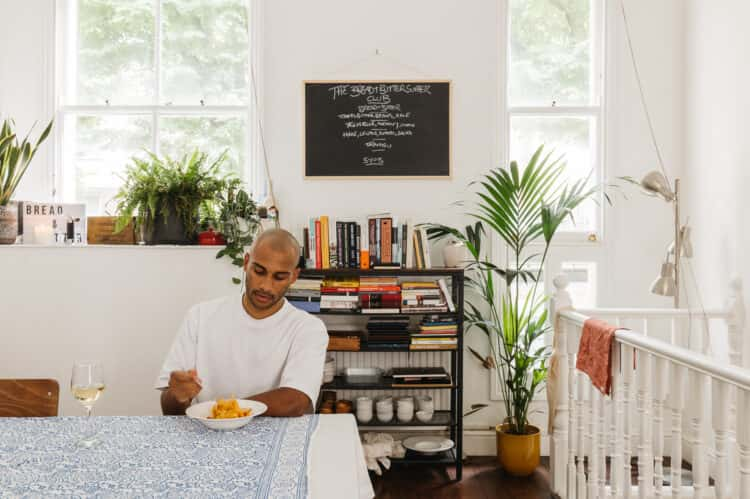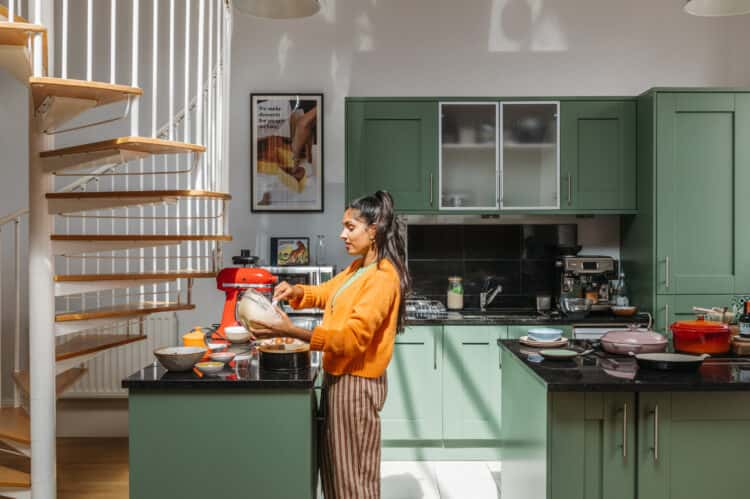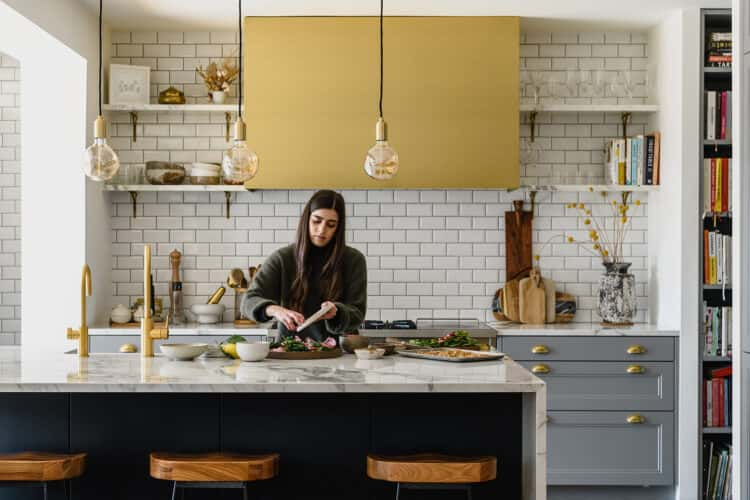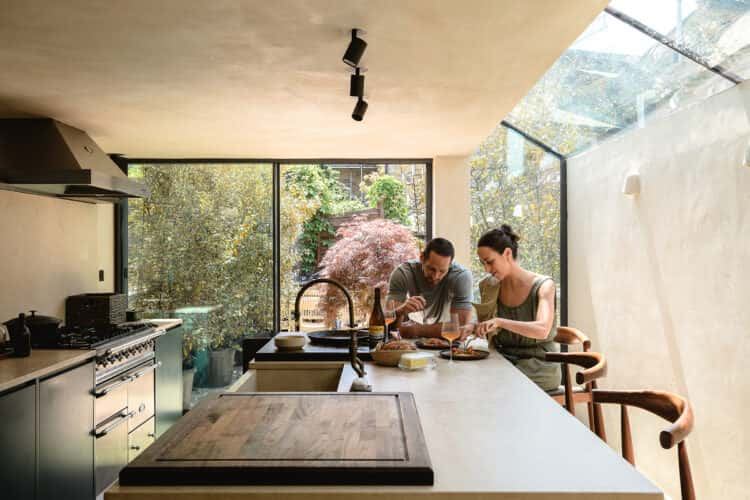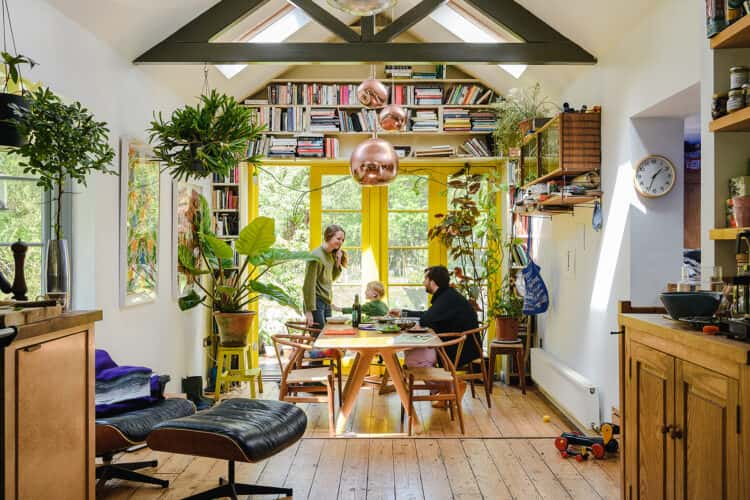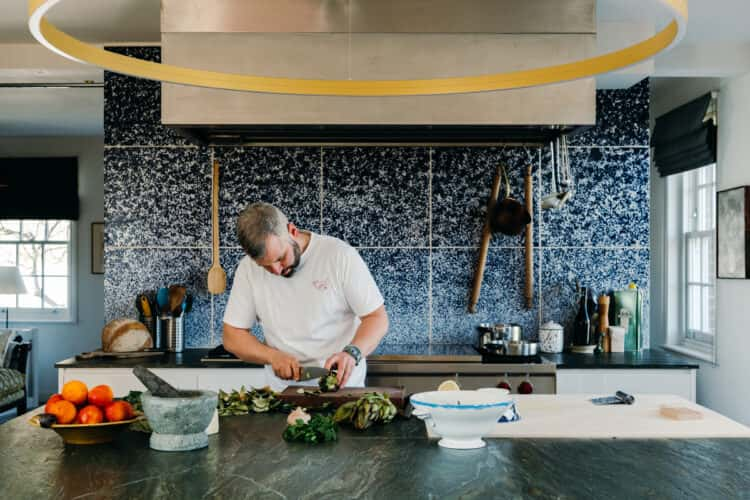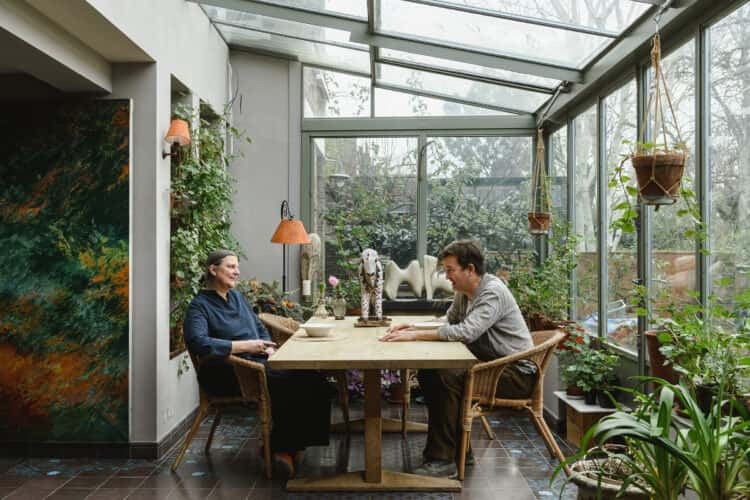Chef Ben Tish on indulgent weekend cooking and the fresh produce he grows in the garden of his home in Limehouse, east London, plus a recipe for a twist on bruschetta
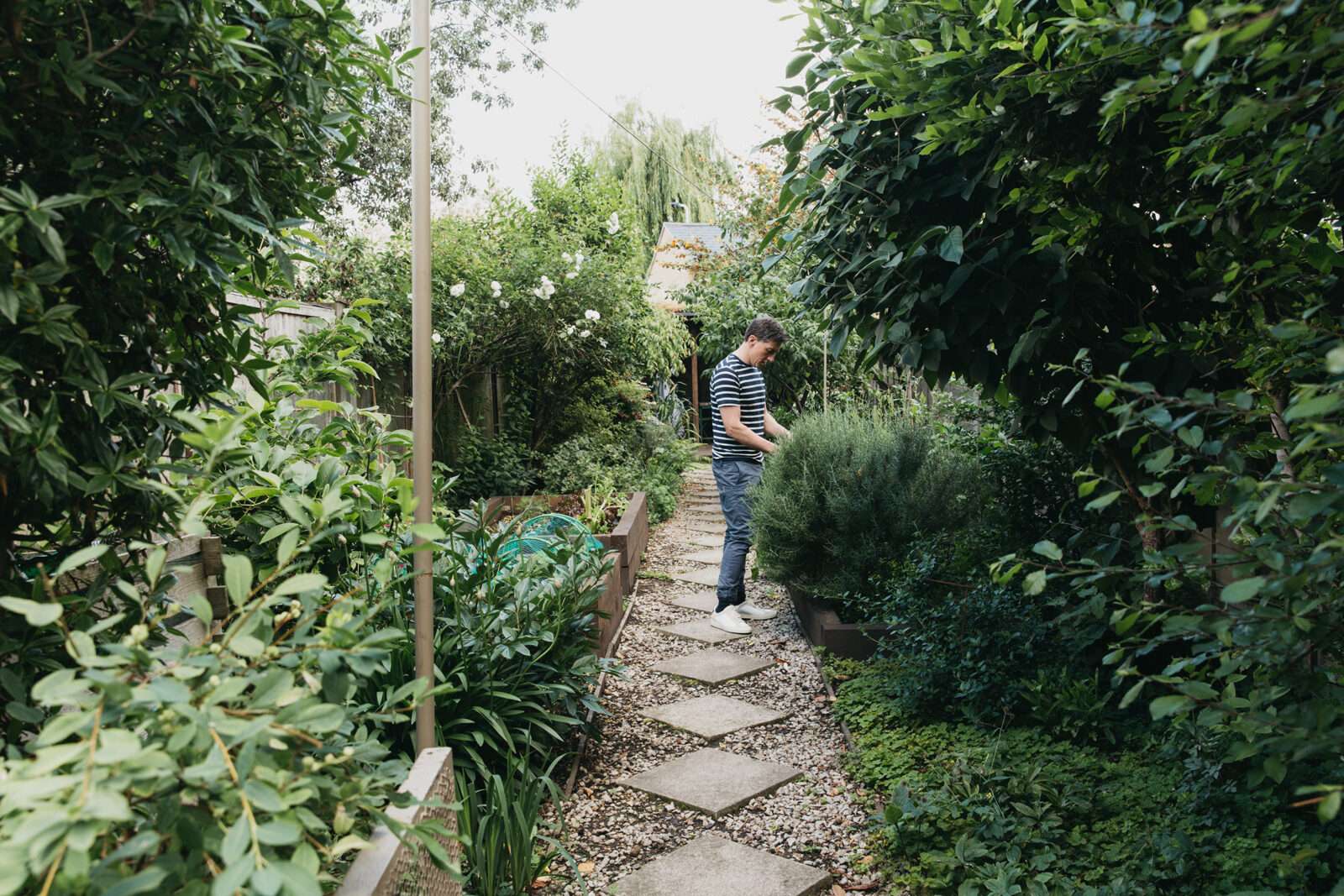
Words Billie Brand
Photography Elliot Sheppard
With over 20 years of experience in food, Ben was previously the chief director of the Salt Yard Group and has held the position of culinary director at The Stafford in St James, West London, since 2017. Right now, Ben is exploring the bold flavours of fresh Sicilian produce at his restaurant Norma on Charlotte Street in Fitzrovia, central London. It was 10 years ago when Ben first visited the Mediterranean island and fell in love with its wild landscape and the rustic cooking championed by locals. His take on Sicilian cuisine at Norma includes roasted hake with braised borlotti beans and mussels, and pan-fried gnocchi with seasonal mushrooms. At home, however, Ben prefers to cook healthy plates inspired by the East during the week – although he’s partial to Sicilian wine when cooking on the weekends. Here, he tells us about sourcing antiques for his kitchen and the greens he grows in his garden.
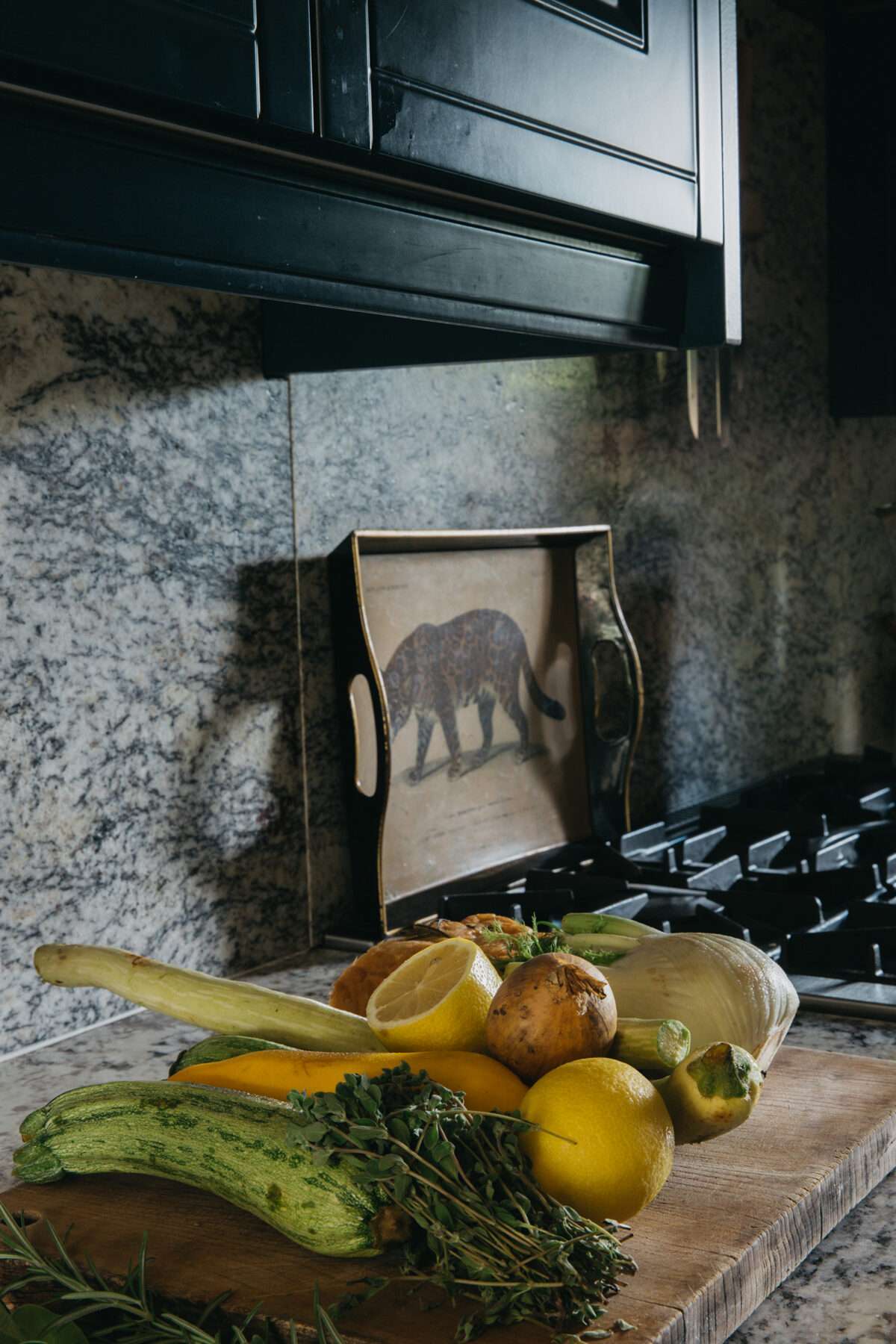
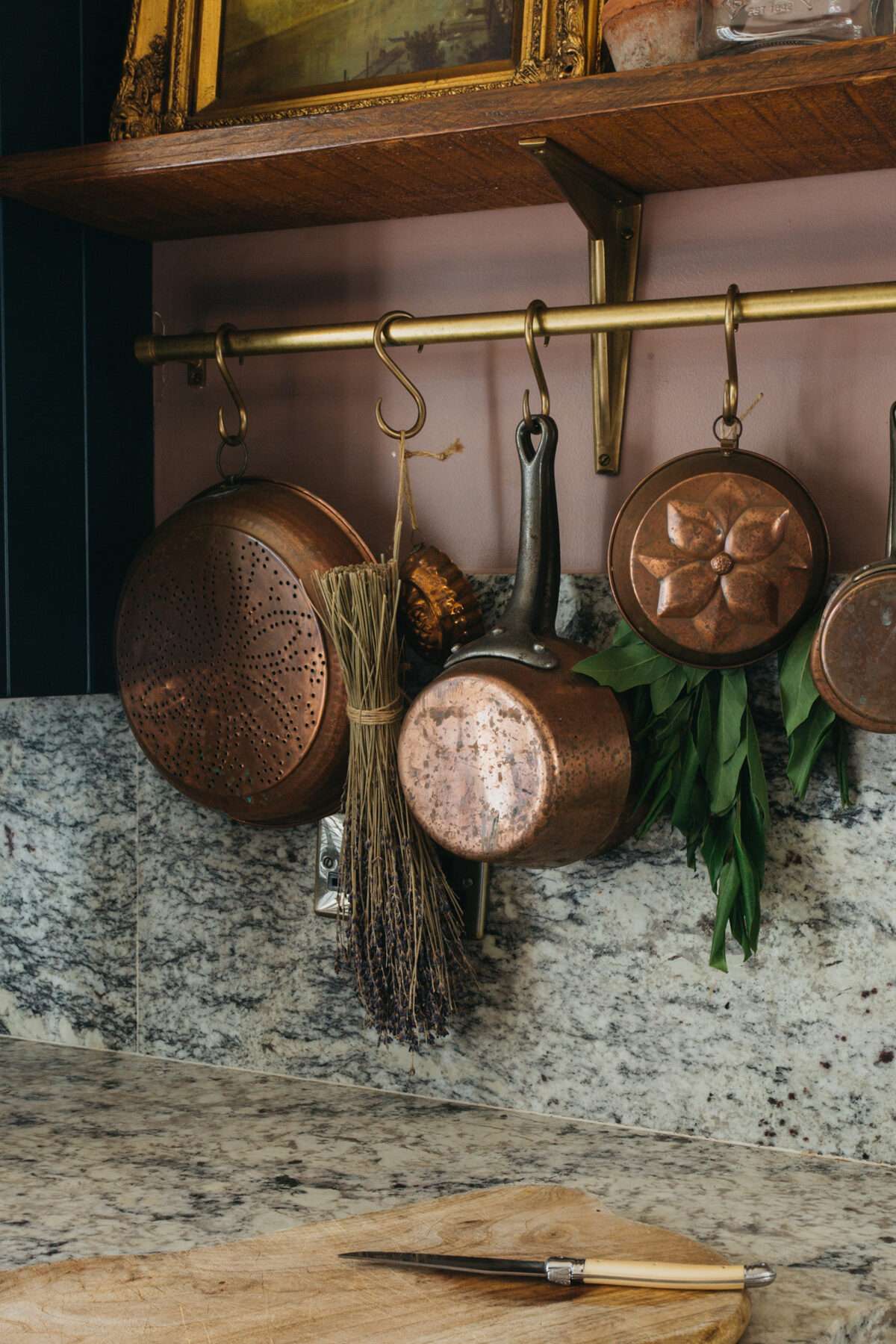
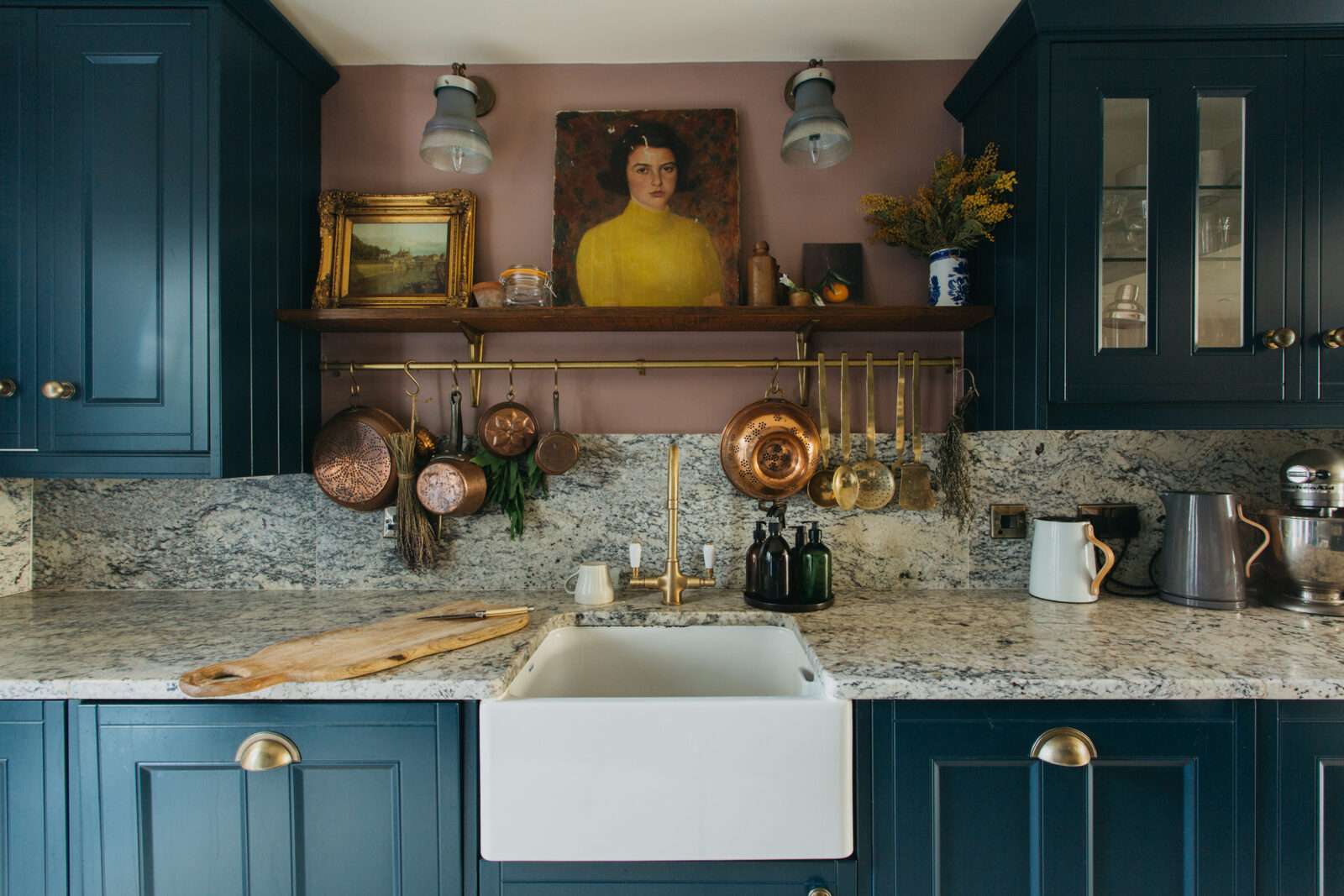
“The kitchen is designed to have an old-world charm to it. I wanted it to match the rest of the home, which is a very old townhouse. I wanted something quirky, and it definitely is. I love the kitchen. I probably cook here more than I do at work if the truth be known – simply because that’s the nature of the beast nowadays.
“We had the kitchen done a couple of years ago. It is a gallery kitchen and quite a challenging space. It was actually quite nice before – a lot of people thought I was mad to redo it as it had just been done when we bought the house, but it wasn’t my cup of tea. It was a bit generic, a little bit dull. I think it’s got more personality now, and I wanted art around. The art and objects are sourced from all over the place – mainly antique and vintage shops. I have friends in Rye who are into the world of antiques, so they’ve helped me source a few pieces. They have a shop in Rye too, where we have found some things.
“The cooker was really important. I like gas and old-school cookers, so I wanted something that was really robust and felt like a professional oven. Perhaps it doesn’t look like one, but when you close the door, it’s really heavy duty.
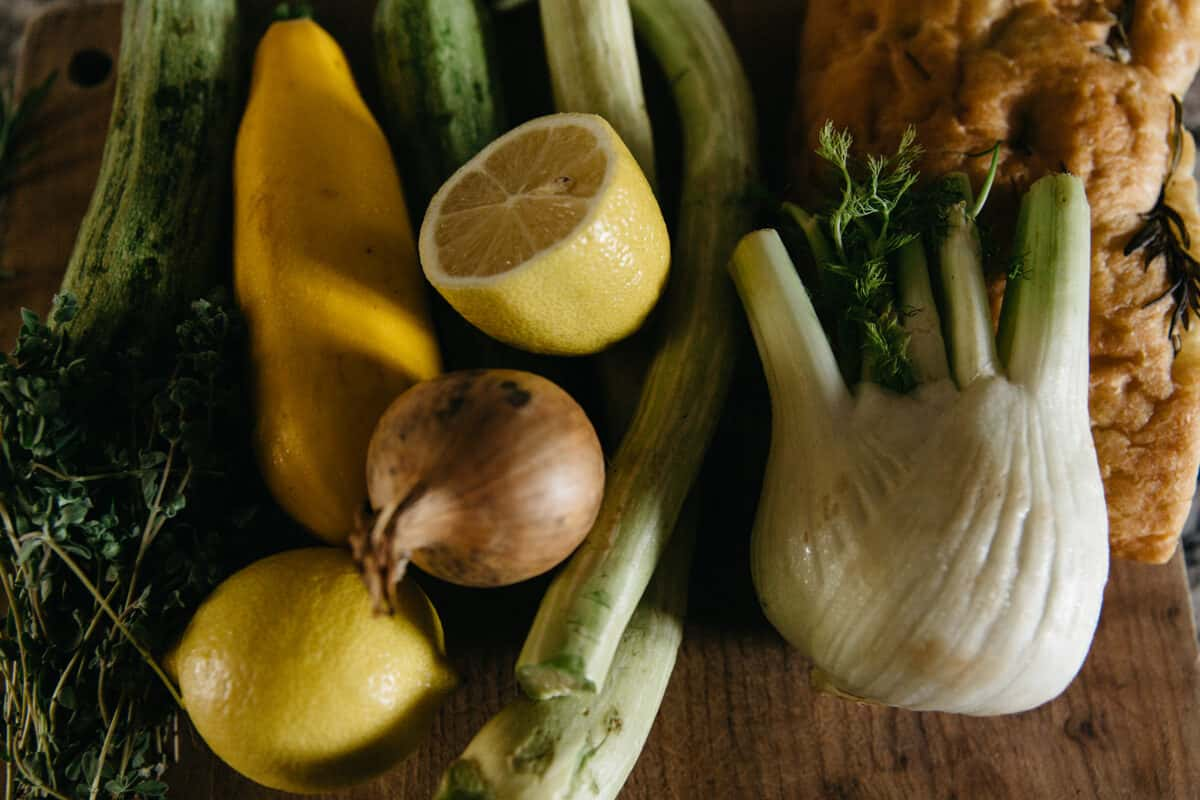
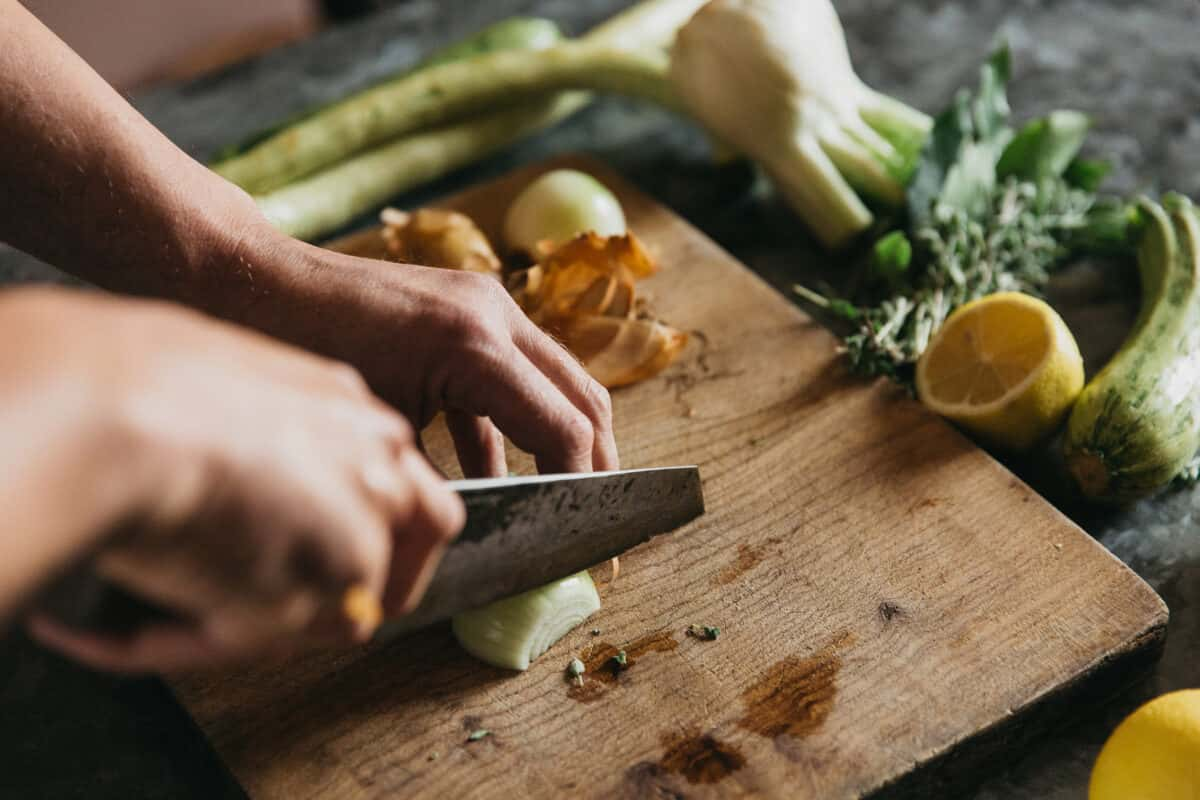
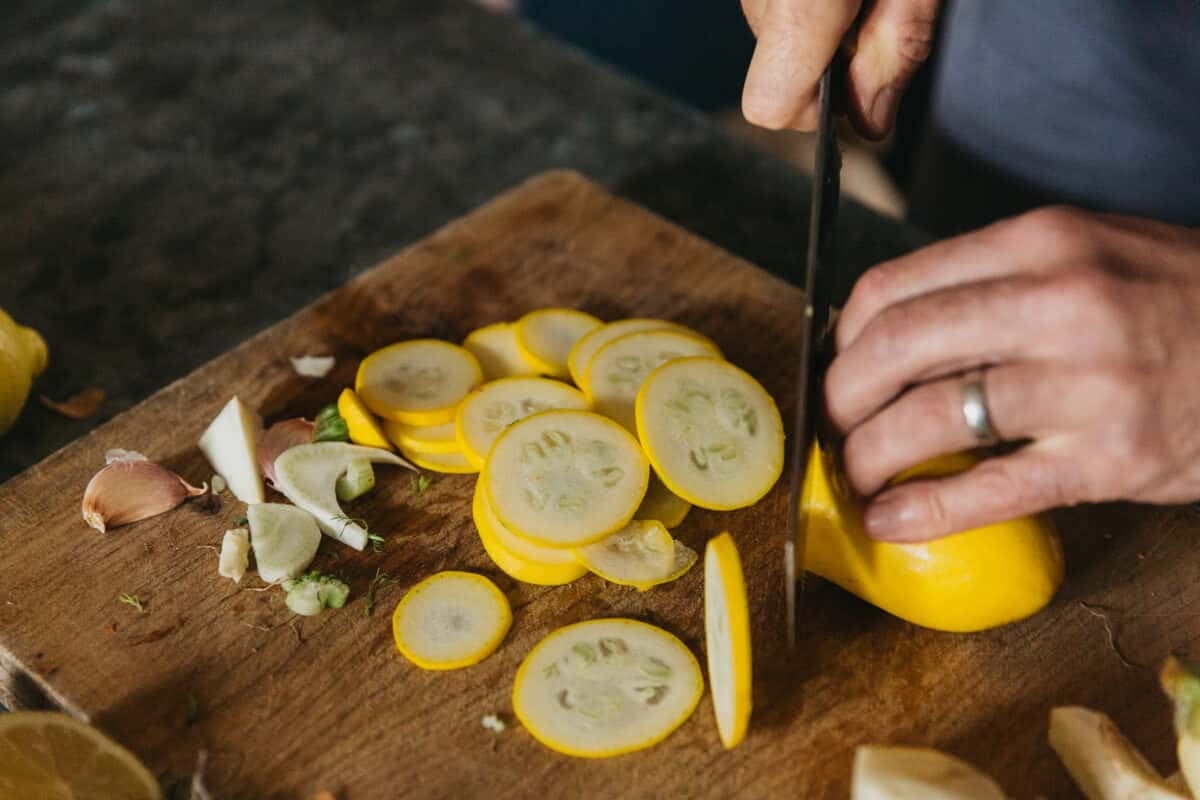
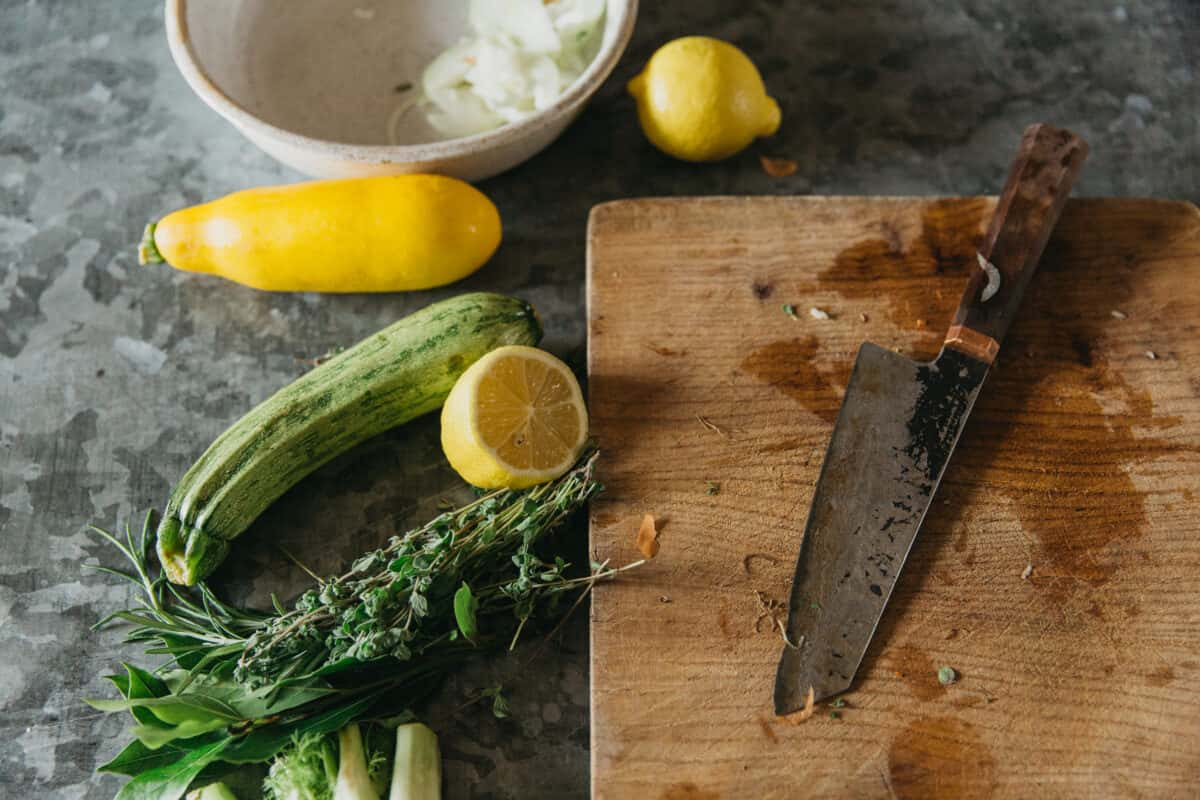
“My most cherished kitchen tools are a microplane, my spice grinder and lemon squeezer. My microplane came from the Borough Market kitchen shop. It’s a really fine one, and I just love how it looks and the way it grates cheese and vegetables. My spice grinder is electronic and it’s super powerful. We make lots of curries and food with spicing in it, so it’s really useful for things like that. I grind cumin, coriander seeds, fenugreek, and dry chillies to make dried chilli powder. I’ve also got a really cool lemon squeezer. We use lemons for everything – every cuisine. I actually got it from Sicily. I’ve always got it out.
“I’ve also got a couple of knives from my early chef days that I’ve probably had for about 20 years. They’re still here, still knocking around. I don’t really use them – they’re purely sentimental.
“The cookbooks I refer to most are the original Moro cookbook – that is 100% the most thumbed book in the kitchen. Jacob Kenedy’s Bocca Di Lupo cookbook – it’s quite old now, but again, I always refer back to that. And I would say Anna Jone’s The Modern Cook’s Year for vegetarian-inspired cooking.
“I use cookbooks if I’m researching recipes for work. I’ve got quite a lot of cookbooks at home in the kitchen. There are about 10 that we use all the time. I just have a flick through when I have a mental block and need food inspiration.
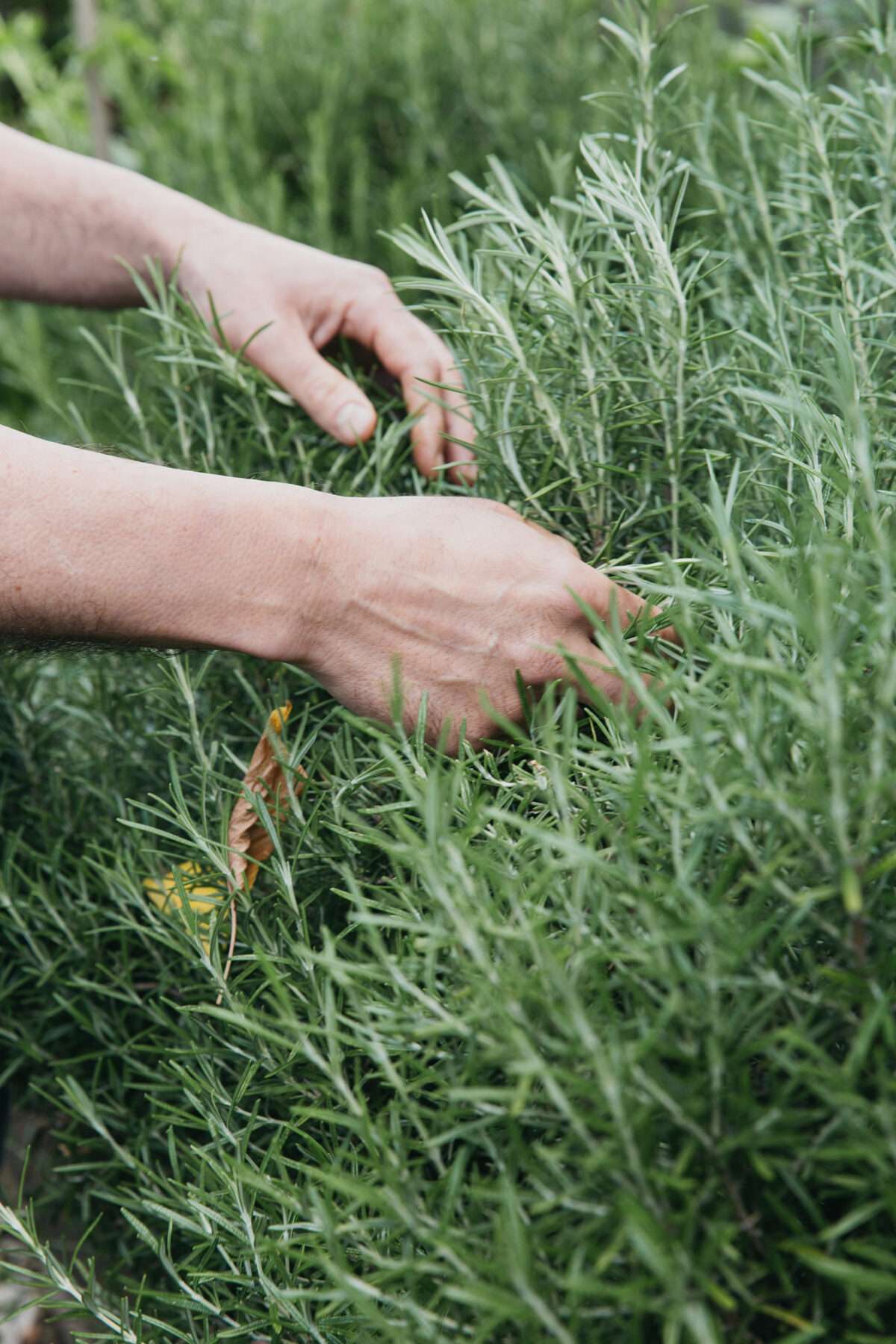
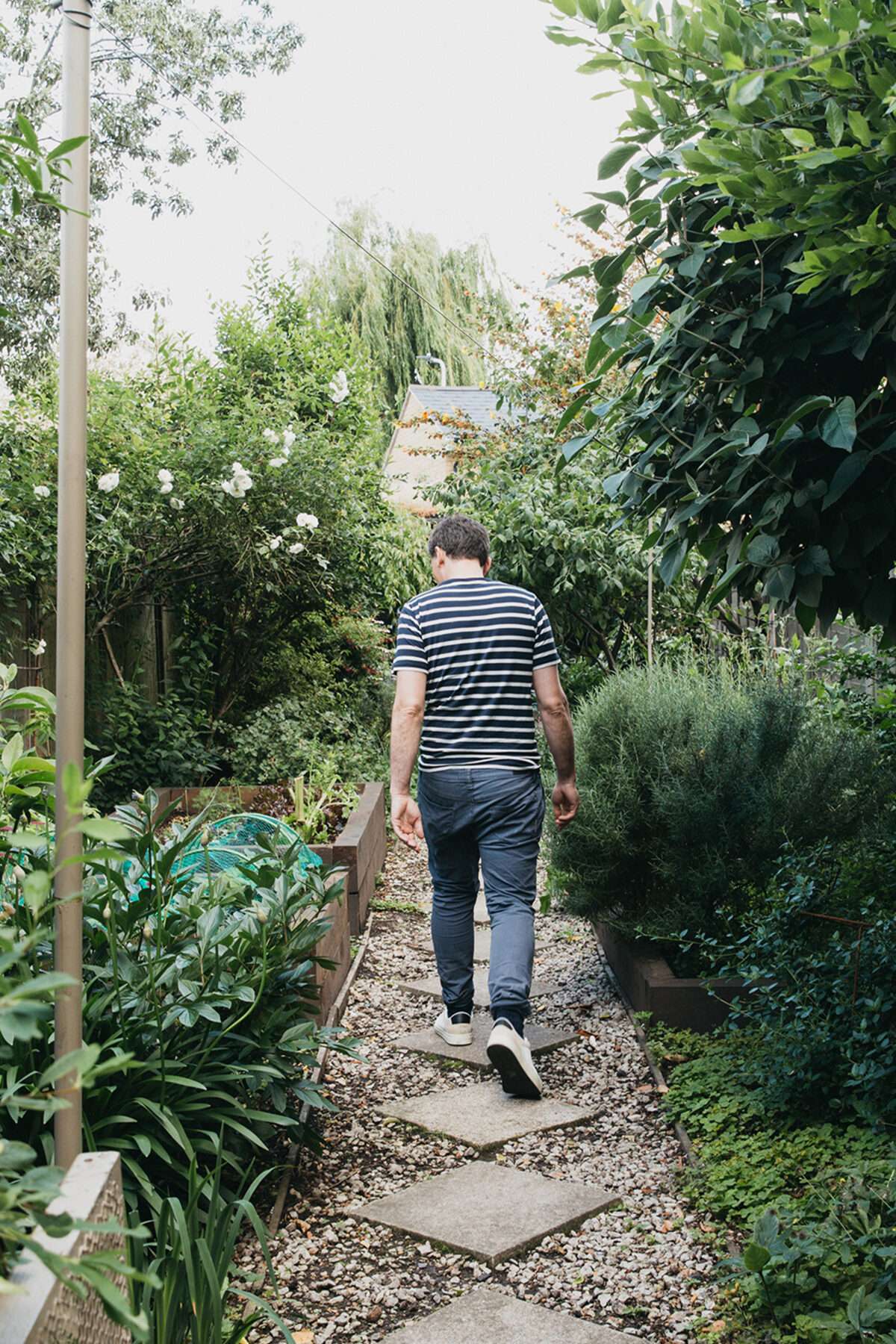
“My approach to home cooking is to try and consciously cook healthy food. During the week, Monday to Thursday, we try and cook less meat, more vegetables. A classic weekday meal is something Asian or Indian, things like stir-fries and noodle soups and healthier curries.
“I was initially attracted to the garden here as it’s full of fruit and vegetables. When we first looked around, there was an enticing bowl of gooseberries on the table and the estate agent said, ‘they were grown in the garden’ – I thought, ‘we have to have this house’. There are all sorts of things growing: strawberries, raspberries, herbs, spinach, sorrel, asparagus, tomatoes and rhubarb. When you look at the front of the house, you don’t expect it.
“We do cook with our produce but probably not as much as you might think. The idea is nice – we certainly use our gooseberries, damsons and rhubarb. The rhubarb is constant all year round. We currently have homemade rhubarb jam in the fridge. And we definitely use all the herbs, they’re really good at the moment. And we have a nice big bay tree.
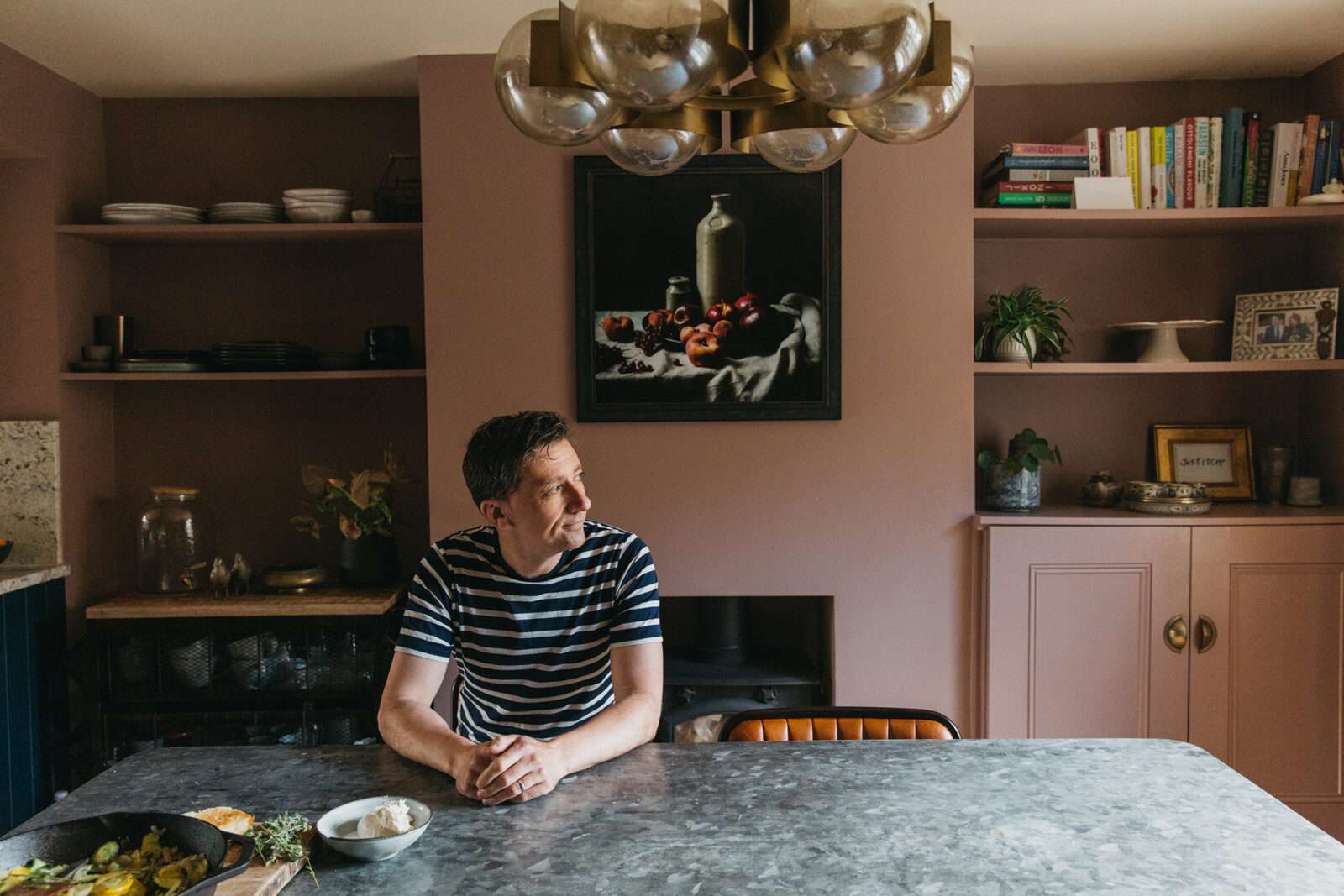
“We always sit at the table in the kitchen to eat – we never eat in the living room. I do drink a lot of Sicilian wine when cooking or with a meal. I think it’s some of the best wine around. At the moment we’re drinking the Etna variety, which is called Chaos Five and is Nykeeta’s favourite wine. It’s really nice, I really like the Etna wines. It’s quite a special area because it’s very volcanic. The wine is absolutely delicious.
“If we’re hosting, I would make something people can help themselves to. I’m not into getting stressed out at a dinner party. As people arrive, we’d have a drink, and then just put some olives and a really nice loaf of bread from E5 Bakery out to share. Perhaps we’d do a whole shoulder of lamb that’s been slow-cooked – from a meat-eating perspective, it pleases everyone. You can make it look nice, put it in the middle of the table, and then everybody helps themselves. Then there would be some sides – if it’s summer, maybe some Italian chard with lemon and chilli. I love potatoes, so I would probably do some kind of crispy potatoes with spices, or cumin, or garlic.
“At the weekend we like to be a bit more indulgent. We might go to town and start making bread, or we might have a really nice burger night. On a Sunday we always try and do some kind of roast – whether that’s a traditional roast centered around a whole chicken, or I might spatchcock it, marinate it with harissa and grill it. I’ve got a little cooking area right at the back at the bottom of the garden. I tend to cook less Mediterranean food here – at work, there’s a focus on Sicily but I don’t really cook Sicilian food at home.
“I particularly enjoy cooking at home on the weekends. During the week it can be a bit of a draw – after you get home from work and there are a million things to do, like take the dogs, then it can be a bit of a chore. But on the weekend it’s more relaxed – I’ll have a glass of wine, the radios on. I find it incredibly therapeutic. I’ll often spend the afternoon cooking on a Sunday, taking time with it.
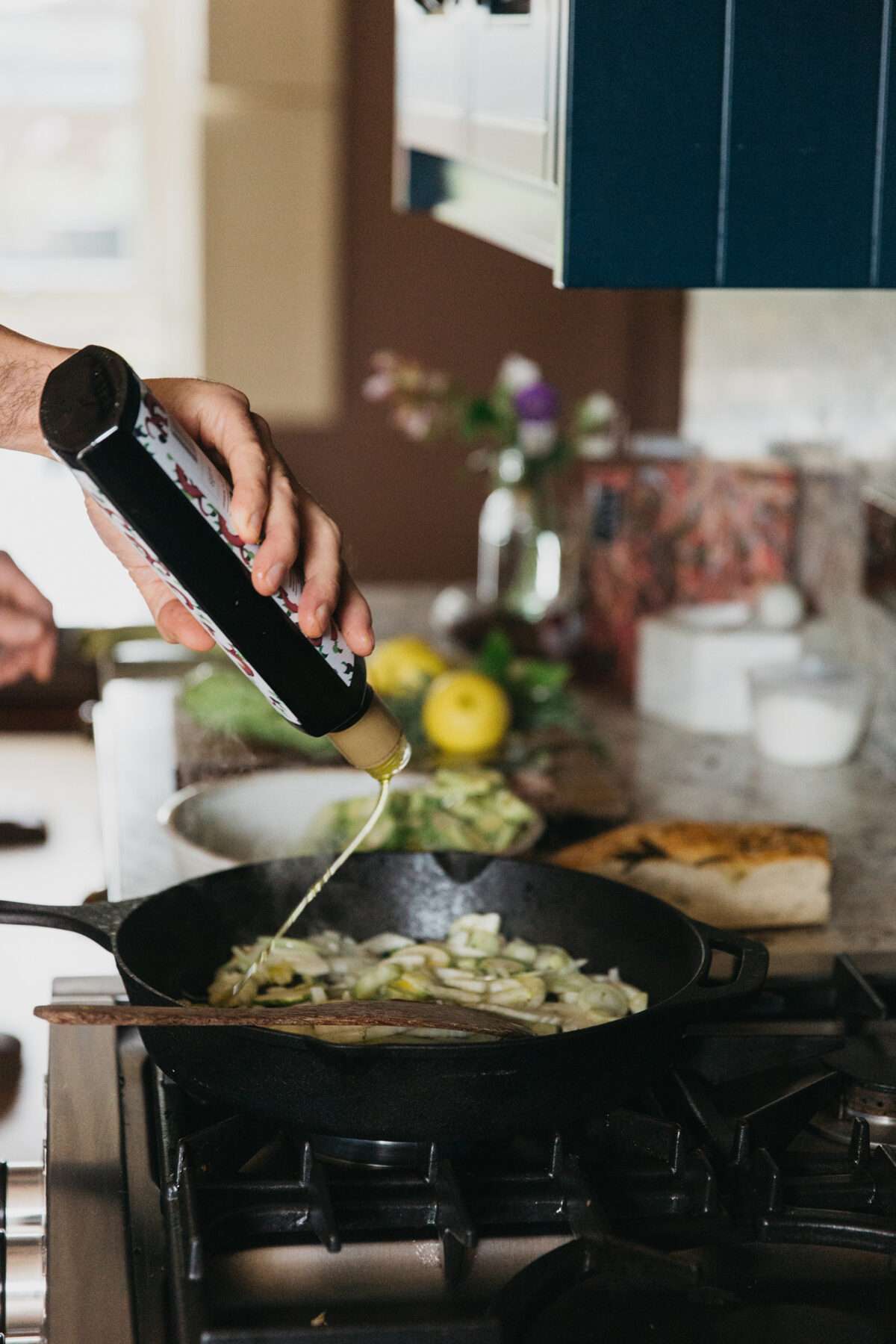
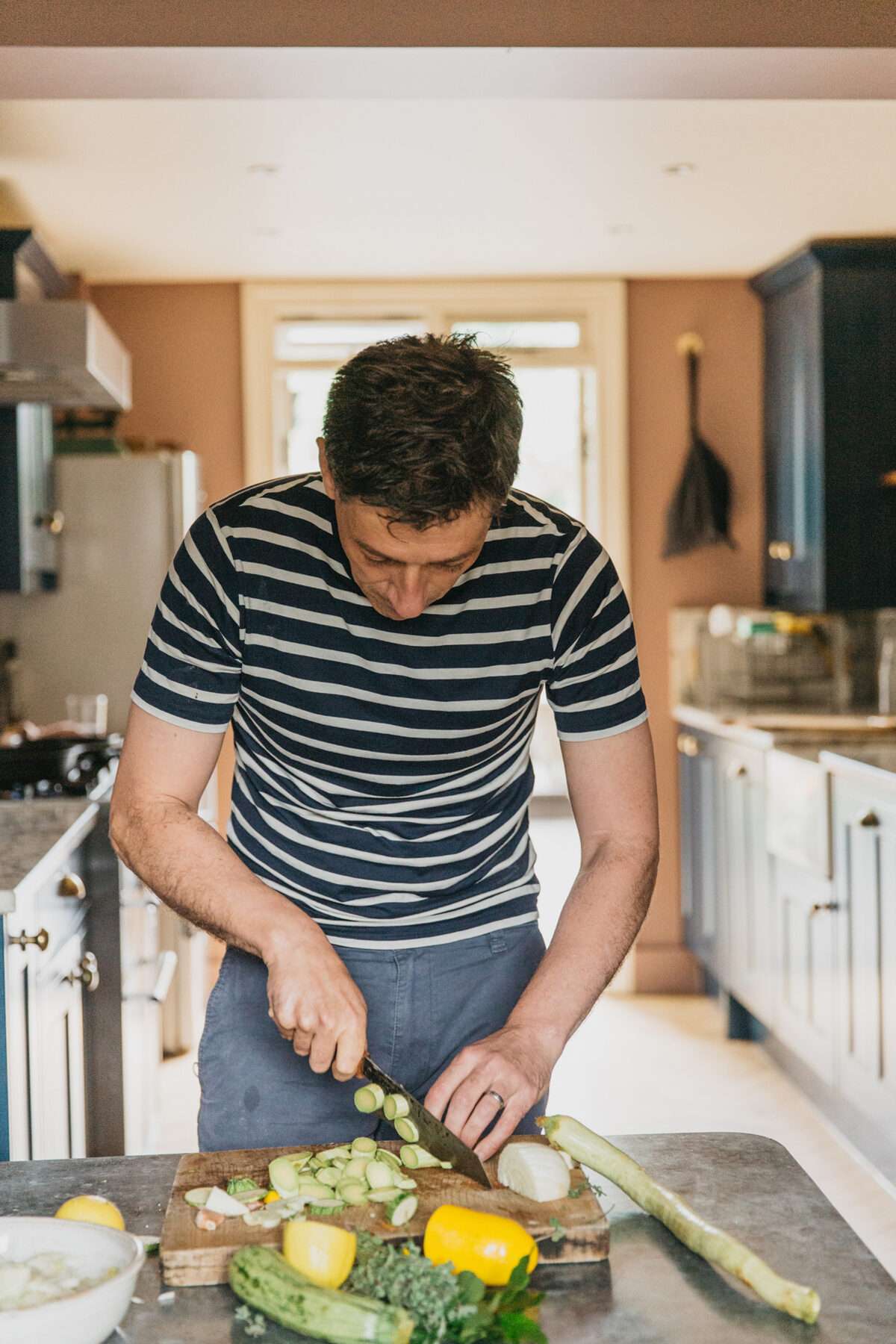
“My most favourite memories are actually from lockdown. I was cooking daily to fill my time and I was Instagramming it a lot – as a lot of chefs were. I absolutely loved it. And it was really popular. I also did some Zoom classes to tie in with my new book, Sicilia, and made a feature out of it called Sicilia At Home. It would happen on a Saturday afternoon and a newsletter would go out before so people could buy all the ingredients and get ready, and then I’d cook along. I love teaching and cooking – that’s something I want to get more into.
A more personal memory is when the work on the kitchen first finished. It was a two-week project that ended up taking six months, it was a bit of a nightmare! But once it was finished, I cooked a Milanese chicken with breadcrumbs and some chips and homemade mayonnaise for Nykeeta and I – that was nice, we were just relieved!”
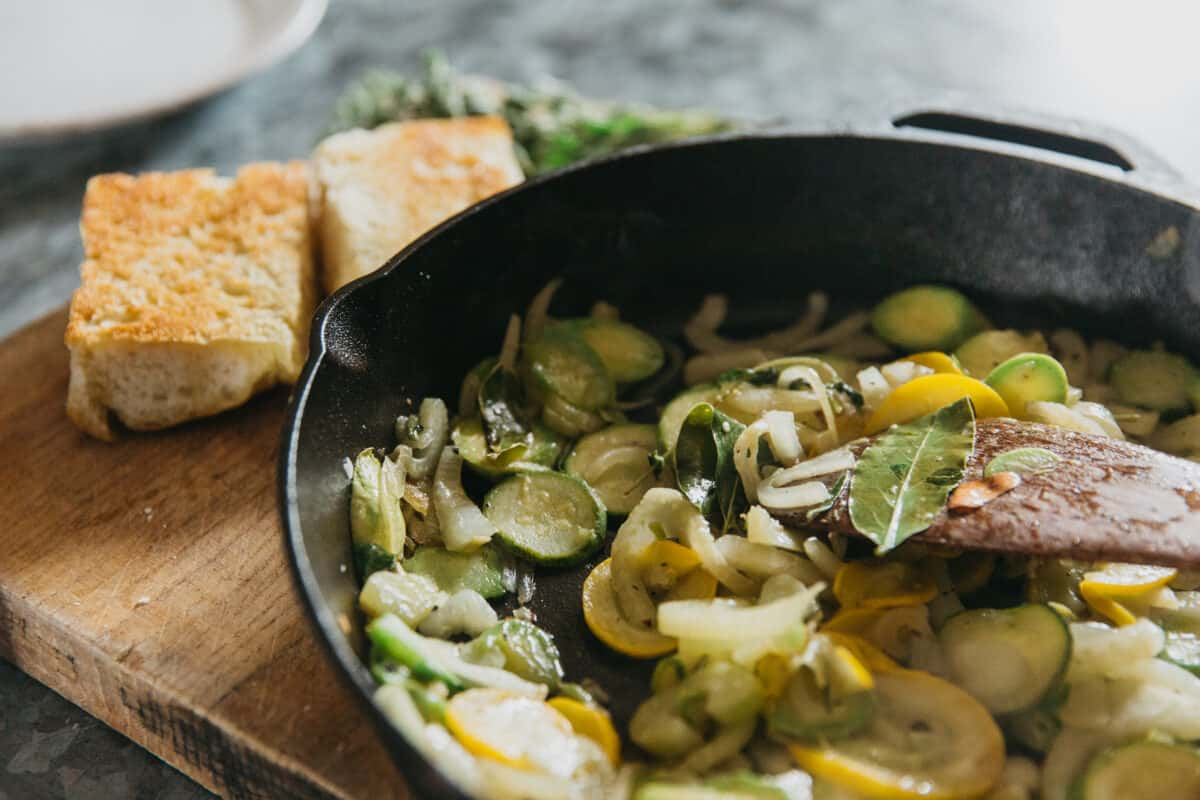
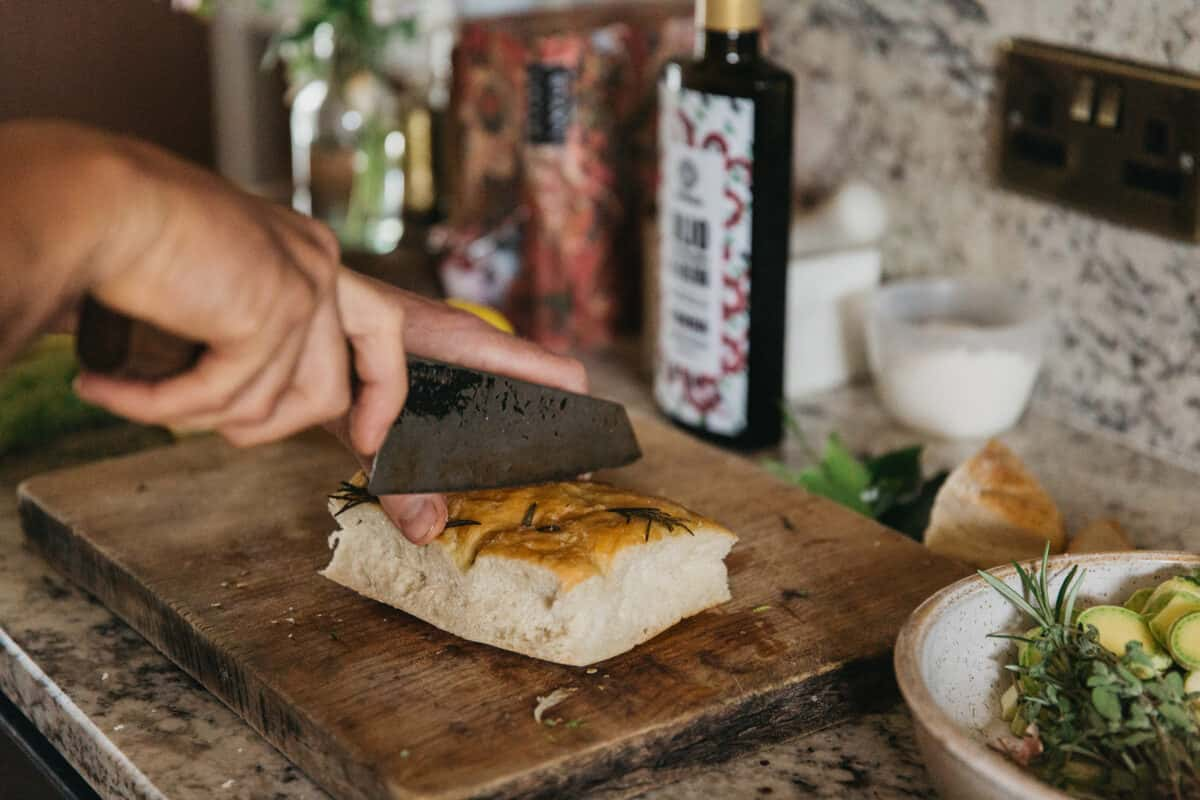
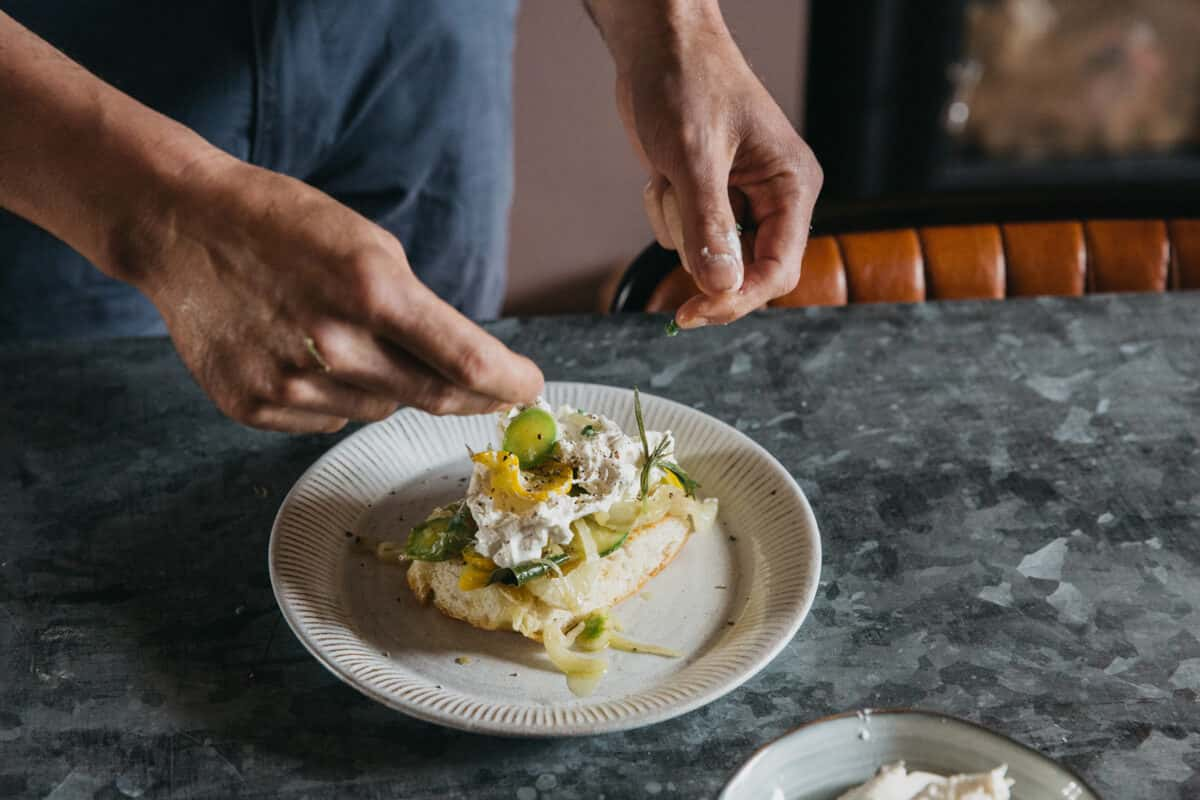
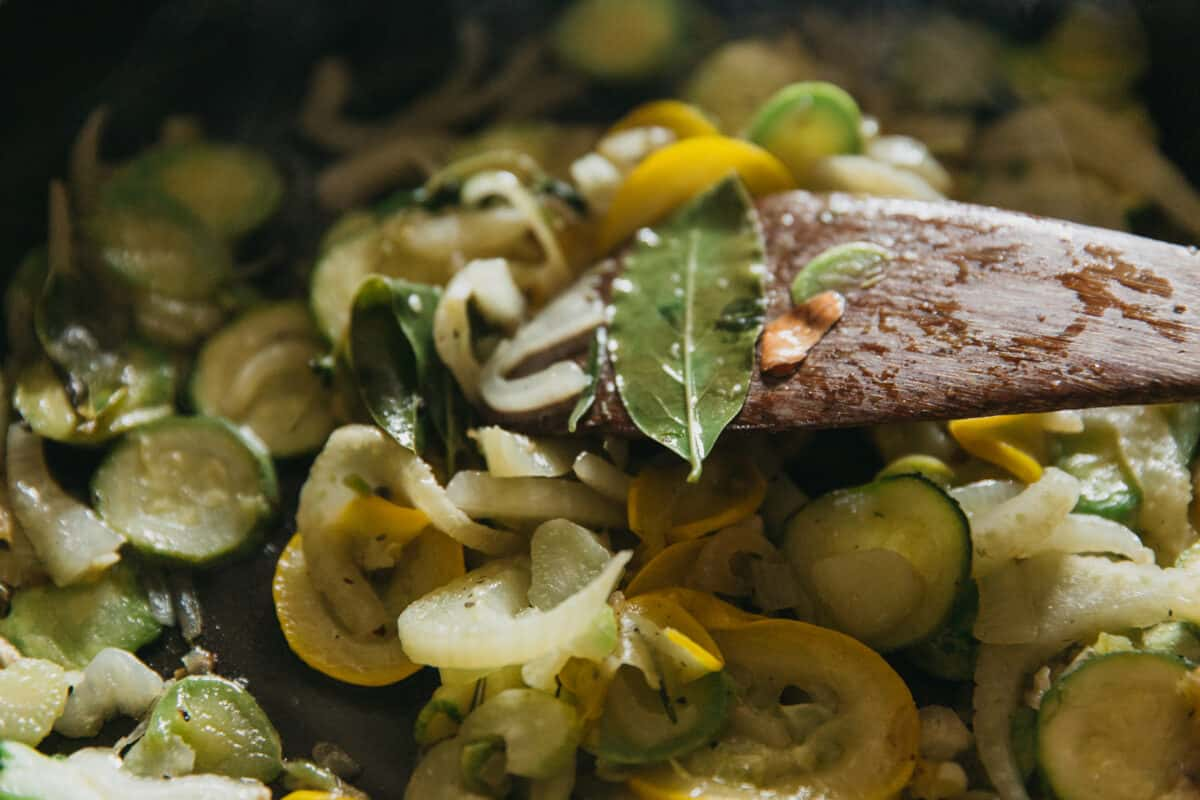
“I love all fresh Italian cheeses – ricotta, mozzarella, stracciatella – but burrata is top of my list. It’s essentially mozzarella – cow or buffalo milk – on the outside and filled with extra creamy stracciatella on the inside. When you cut it open, it oozes out in the most enticing way. I use it for cooking and it works brilliantly in an aubergine parmigiana. The super fresh burrata should ideally be eaten within 24 hours of being made. I like to have it really simply with some bruschetta and vegetables. The stewed courgettes and fennel here can be made in a larger quantity and stored in the fridge. It’s great with grilled meats or fish as well.”
Serves 4
4 pieces of very fresh burrata (120g each)
4 slices of sourdough bread
1 head fennel, core removed and finely sliced
500g green courgettes, ends trimmed and finely sliced
1 clove garlic, peeled and finely chopped
1 banana shallot, peeled and sliced
1 sprig rosemary
1 bay leaf
1 tablespoon red wine vinegar
1 tsp demerara sugar
Fresh marjoram leaves
Sea salt, black pepper and extra virgin olive oil
Heat a heavy-based saucepan over a low heat. Add a glug of olive oil followed by the garlic, shallots, bay and rosemary and cook slowly until very soft but not coloured. Add the sliced fennel and cook for five minutes until tender; then add the courgettes. Sprinkle in the vinegar, sugar and some seasoning, stir and then simmer everything together for 20 minutes or until tender. Cool, before transferring into a bowl into the fridge and leave to settle for at least two hours before eating.
Remove the burrata and stewed vegetables from the fridge. Rub the sourdough slices with olive oil, season, and then grill on a griddle pan to colour each side. Spoon the courgette and fennel stew onto the bruschetta and top with the burrata. Season the top of the burrata and drizzle with extra virgin oil. Sprinkle over the marjoram leaves to finish.
